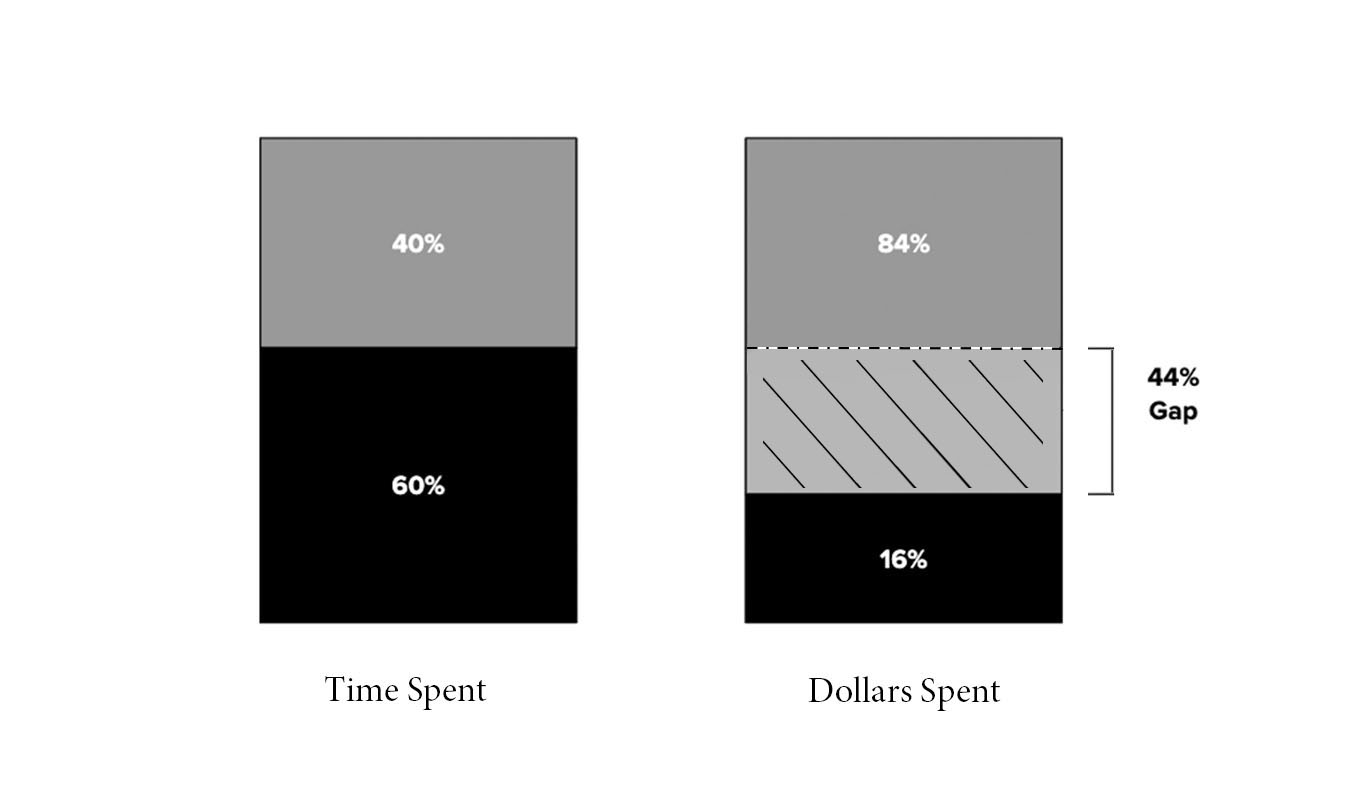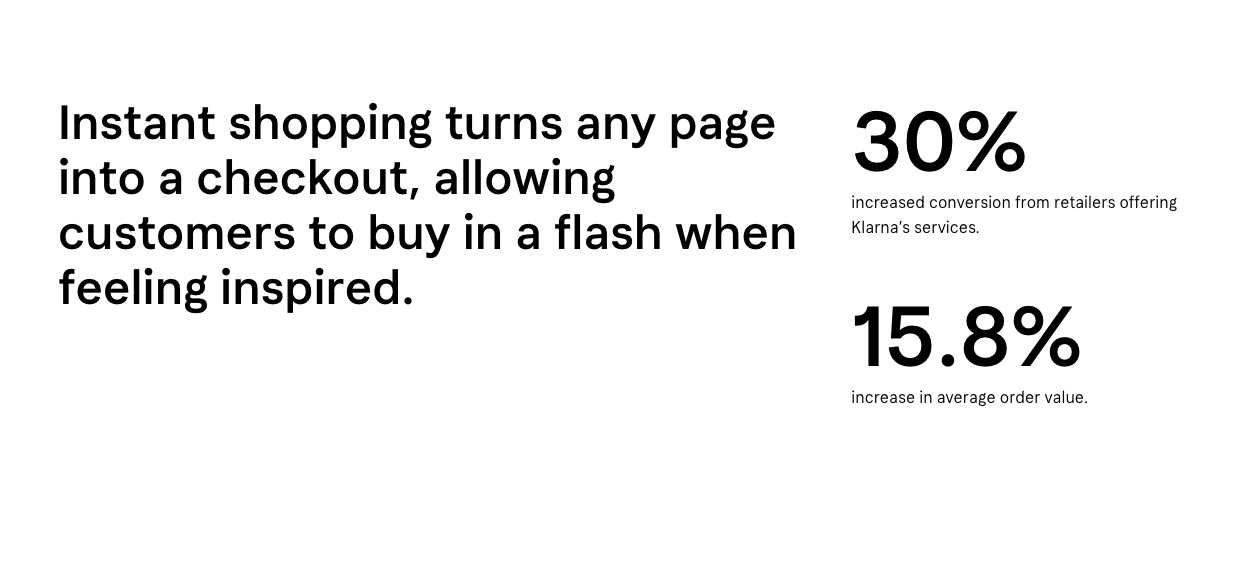Insights to Increase Your Conversion Rate on Mobile
6 Min Read
Newsflash! Mobile is NOT the future. It’s the present AND the future (perfectly stated by Corra’s lead UX Strategist, David Yates). Mobile now sits above desktop in the digital ecosystem and merchants should adjust their mindset accordingly.
Before we get into strategies for closing the mobile conversion gap, let’s look at the current stats:
- Mobile accounts for 60% of all online traffic but contributes to only 16% of purchases.
- Desktop accounts for a 50% higher AOV (average order value) than mobile.
- 51% of users have purchased from a site other than what they intended to because they received a more relevant experience there.


There’s a 44% conversion gap on mobile. That’s some serious revenue left on the table, if you ask us. Revenue that you can help yourself to by investing and prioritizing your customer experience on mobile.
Despite the rise of mcommerce (mobile commerce), cart abandonment rates are still dismal (the average cart abandonment rate on mobile is 80%).
Many merchants mistakenly believe that consumers have plenty of time and patience to go through numerous steps to complete the purchase. The result is not only a lost sale, but also a lost customer. – Arash Eftekhari, Product Manager at Klarna.
Sidenote: Klarna is a payment solution that gives customers more flexible payment options at checkout. The solution has been proven to increase AOV (average order value) significantly and reduce cart-abandonment rates (see graphic below).


From a high-level perspective, the key is tailoring your customer journey on mobile to be as intuitive and effortless as possible for your target demographic. This involves some detective work, analyzing your consumer behavior data to see how your visitors are shopping. For example, if your demographic is browsing their phone for products during micro-breaks (while in line for coffee, waiting for their lunch date to arrive, etc.) you’ll want to factor this into your mobile checkout flow to make the experience as instantaneous as possible.
One ‘micro-break’ merchants haven’t been able to access until recently, are Subway or Tube commutes. If your demographic is concentrated in a metropolitan city like New York or London (or any city users may take underground transportation) you’ll want to seriously consider implementing PWAs (Progressive Web Apps). When users experience interrupted internet connection, PWAs will continue to perform.
With Progressive Web Apps you’ll have access to your target audience on their subway commute while your competitors’ products and services are unavailable.
Other advantages of PWAs (other than rich offline experiences) are the following:
- Lightning-fast performance
- High organic SEO equity
- Home-screen icon
- Push notifications, background sync
- Device capabilities (camera, location, gyroscope, etc.)
What exactly are PWAs?
PWAs combine the best of the mobile web with the best of mobile apps (optimal mobile user experience). According to Business Insider, 53% of worldwide shoppers prefer using a retailer’s mobile website rather than their app. PWAs solve this issue by merging the best of both experiences. A PWA is a web app based on an open-source, standards-based technical architecture that uses modern web capabilities to deliver an app-like experience to users. They’re deployed to servers, accessible through URLs, and indexed by search engines.
Corra’s embracing PWAs as an extension of our Headless initiatives. We’re actively creating FWRD, a unique PWA storefront designed specifically with the demographics of lifestyle brands in mind (reach out to schedule a demo).
LOOKING FWRD?
Headless architecture is an increasingly popular trend, and for a good reason. Separating the presentation layer of the website architecture from the application layer of the ecommerce platform brings countless benefits, including offering full front end portability (regardless of the legacy back end) and the ability to quickly respond to the addition of new channels and IoT devices. Moreover, by launching a PWA that is separated from the back end, merchants can go to market with fast, revenue-generating experiences.
Leveraging this future-proof technology, Corra is creating FWRD: a platform-agnostic PWA storefront that combines lighting-fast performance with a sophisticated front end crafted around the needs of lifestyle consumers. Being completely headless, its architecture allows retailers to seamlessly attach the app-like front end to any backend system via APIs. To ensure even more agility, FWRD comes equipped with a proprietary library of UI components. This catalog was built using the latest front-end technologies, and offers dozens of features that can be smoothly implemented to convey your unique brand experience. Through FWRD, you can embrace the power of PWAs to increase your prominence among search rankings, improve site speed immensely, and convert mobile shoppers – even when they are browsing offline.
SITE SPEED IS CRUCIAL ON MOBILE.
New research by Google suggests that 53% of mobile users will abandon a site if it takes more than 3 seconds to load. Visitors interacting with a PWA experience faster load times of over 50% (measured on Forbes and The Weather Channel).
A page that takes even one second longer to load can reduce conversions by as much as 20%. By simply utilizing the right technology or working with Corra’s Page Speed Engineers, merchants can increase their conversion rate on mobile considerably.
ENABLE EXPRESS CHECKOUT.
As a consumer, there’s something empowering about a smooth and immediate purchase, especially with the small items you don’t need to contemplate (like lipstick or a phone case). Retailers should test out different payment methods on their ecommerce sites.
One option that may be compelling for your brand is Instant Shopping by Klarna. It’s basically an express lane for checking out on mobile. It turns any page into a checkout, pre-fills personal data and ensures the purchase is completed without the user having to leave the product page. The merchant gets paid in full, upfront; and the customers are then notified when their payment is due.


To optimize your mobile experience, put yourself in your customer’s shoes. When shopping on their phones in public, visitors may feel uncomfortable pulling out their credit card to enter their information. Integrations like Apple Pay make transactions a breeze, skipping the added effort of reaching into your wallet or purse to manually type the numbers (our grandkids will laugh at this one day). The best way for brands to reduce cart abandonment rates and drive conversions is to integrate payment systems like Klarna, Venmo, PayPal, Google Pay and Apple Pay into their mobile platforms. A study posted on the Magento blog showed a 8.72% lift in revenue per visitor from adding PayPal Express Checkout.
SOCIAL COMMERCE IS THE FUTURE.
The way users interact with Instagram has evolved over the years. What once was primarily a social network/image sharing platform has gradually morphed into a shopping and brand discovery destination. Originally user behavior may have looked something like this: a consumer scrolls their feed or bounces from profile to profile, saving posts with products they like: the Levi’s straight leg jeans, the Warby Parker Blue Light Glasses, etc. They then save the items to potentially purchase later, or click the link in bio to browse a brand’s site.
Instagram recently introduced its ‘Checkout on Instagram’ feature which is a game-changer. Now you can fall in love with a matte eyeshadow palette and purchase it that instant (as demonstrated below).


Instagram will also prefill your information after your first purchase, to streamline the process thereafter. This feature is still in beta and only available for select brands in the U.S. right now, but once it’s rolled out in its entirety, we predict it will be an extremely effective conversion tool for merchants with active audiences on Instagram. Also, stay tuned for Shoppable YouTube Google recently announced. Commerce is becoming more social than ever, playing a role in closing the mobile conversion gap.
PERSONALIZE THE EXPERIENCE.
It’s true that on mobile, every second matters. The sooner you can show the visitor the products that best align with their browsing habits or search history, the better.
Corra helped Hedley & Bennett (a premium workwear brand designed for the kitchen and beyond) increase their revenue by 10% in the first month of implementation. Now through personalized recommendations across both mobile and desktop, enabled by our partner Nosto, the brand is seeing 18.7% of their sales attributed to personalization.
Increasing your conversion rate on mobile comes down to testing and optimizing your customer experience. Customer Experience Designers, payment solution partners, Revenue Optimization Specialists, and Technical Solutions Strategists will be instrumental in this undertaking. Thankfully Corra’s internal teams are well equipped to assist you with all of these services. Ask us about our new Conversion Accelerator or schedule a demo of FWRD our PWA Storefront, to help you increase your revenue on mobile.

